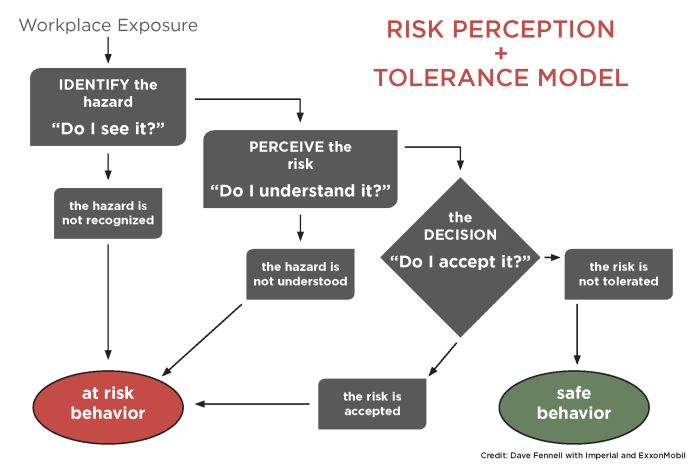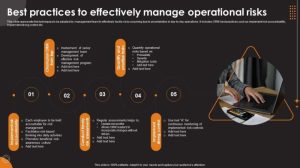
Personal risk tolerance sets the stage for this engaging discussion, shedding light on how individuals navigate financial risks with a keen eye on their unique thresholds and preferences. As we delve into the intricacies of risk assessment and management, you’ll uncover valuable insights to empower your decision-making process.
Explore the nuances of risk tolerance through various lenses, from psychological aspects to practical strategies, in this comprehensive exploration of personal finance.
What is Personal Risk Tolerance?

Personal risk tolerance refers to an individual’s willingness and ability to take on risk in their investment or financial decisions. It is a subjective measure that varies from person to person based on a combination of factors.
Factors Influencing Risk Tolerance
- Age: Younger individuals tend to have a higher risk tolerance as they have more time to recover from any potential losses. On the other hand, older individuals may have a lower risk tolerance as they are closer to retirement and need to preserve their wealth.
- Financial Situation: Those with stable financial situations and higher income levels may be more willing to take on risk compared to those with limited resources and financial obligations.
- Personality Traits: Some individuals are naturally more risk-averse, while others may be more comfortable with taking risks. Factors such as past experiences, education, and confidence can also influence risk tolerance.
Assessing Personal Risk Tolerance
Assessing personal risk tolerance is a crucial step in making informed investment decisions. By understanding your risk tolerance, you can tailor your investments to align with your financial goals and comfort level. There are several common methods used to assess personal risk tolerance:
Questionnaires
One of the most common methods is through risk tolerance questionnaires. These questionnaires typically ask individuals a series of questions about their financial situation, investment goals, time horizon, and feelings towards risk. Based on the responses, an individual’s risk tolerance is determined.
Psychometric Testing
Psychometric testing is another method used to assess personal risk tolerance. This method measures an individual’s psychological traits and preferences to determine how much risk they are willing to take on in their investments.
Comparative Assessment Tools
There are various risk tolerance assessment tools available that compare an individual’s risk tolerance to others in similar financial situations. These tools provide a benchmark for understanding where an individual falls on the risk tolerance spectrum.
Importance of Understanding Risk Tolerance
- Understanding one’s risk tolerance is essential before making investment decisions as it helps individuals choose investments that are in line with their comfort level.
- It can prevent individuals from making impulsive decisions during market fluctuations that may not align with their risk tolerance.
- Knowing one’s risk tolerance can also help in creating a diversified investment portfolio that balances risk and potential returns.
Managing Personal Risk

In managing personal risk, it is essential to implement strategies that can help mitigate potential financial losses. By diversifying investments and obtaining appropriate insurance coverage, individuals can protect themselves against unforeseen events that may impact their financial well-being.
Diversification for Risk Mitigation
Diversification is a key strategy for managing personal risk effectively. By spreading investments across different asset classes, industries, and geographical regions, individuals can reduce the impact of a single investment performing poorly. This helps in minimizing the overall risk exposure of a portfolio.
- Diversifying across asset classes such as stocks, bonds, real estate, and commodities can help balance risk and return.
- Investing in various industries like technology, healthcare, and consumer goods can reduce the impact of sector-specific downturns.
- Geographical diversification involves investing in different countries or regions to mitigate the risk of local economic downturns or geopolitical events.
Role of Insurance in Risk Management
Insurance plays a crucial role in managing personal risk by providing financial protection against unexpected events. By paying a premium, individuals transfer the risk of certain losses to an insurance company, which can help mitigate the financial impact of these events.
Insurance policies such as health insurance, life insurance, auto insurance, and homeowners insurance can protect individuals and their assets from various risks.
- Health insurance covers medical expenses in case of illness or injury, reducing the financial burden on individuals.
- Life insurance provides a payout to beneficiaries in the event of the policyholder’s death, ensuring financial security for loved ones.
- Auto insurance protects against vehicle-related accidents and liabilities, covering repair costs and legal expenses.
- Homeowners insurance safeguards the home and its contents from damage or loss due to fire, theft, or natural disasters.
Psychological Aspects of Risk Tolerance
Understanding the psychological factors that influence an individual’s risk tolerance is crucial when making financial decisions.
Emotions and Biases in Decision-Making
Emotions play a significant role in how we perceive and react to risk. Fear, greed, overconfidence, and herd mentality are common emotions that can cloud judgment when faced with risky situations. Biases such as anchoring bias, confirmation bias, and loss aversion can also impact decision-making, leading to suboptimal choices.
Overcoming Psychological Barriers
- Awareness: Recognize your emotions and biases when assessing risk tolerance. Understand how they influence your decisions.
- Education: Learn about different investment options and strategies to make informed choices based on facts rather than emotions.
- Diversification: Spread your investments across a variety of assets to reduce the impact of emotional biases on individual holdings.
- Consultation: Seek advice from financial professionals or mentors to gain different perspectives and overcome personal biases.
- Regular Review: Continuously monitor your risk tolerance and investment portfolio to adjust to changing circumstances and emotions.
In conclusion, understanding your personal risk tolerance is key to steering your financial journey with confidence and resilience. By embracing a holistic approach to risk assessment and management, you pave the way for a secure and prosperous future.
FAQ Guide
What factors influence personal risk tolerance?
Personal risk tolerance can be influenced by various factors such as age, financial stability, investment goals, and psychological traits.
How can diversification help in managing personal risk?
Diversification involves spreading investments across different asset classes to reduce overall risk exposure and safeguard against potential losses.
What role does insurance play in managing personal risk?
Insurance serves as a protective mechanism by transferring certain risks to an insurance company in exchange for premium payments, providing financial security in times of need.
How do emotions impact decision-making in risky situations?
Emotions can cloud judgment and lead to impulsive decisions, potentially affecting one’s risk tolerance and overall financial outcomes.
What are common methods used to assess personal risk tolerance?
Common methods include risk assessment questionnaires, consultation with financial advisors, and self-reflection on past financial experiences.





